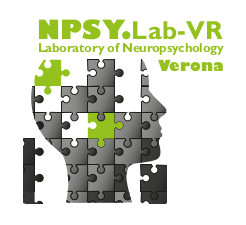Authors Michele Scandola, Loredana Canzano, Renato Avesani, Mara Leder, Sara Bertagnoli, Valeria Gobbetto, Salvatore M. Aglioti, Valentina Moro Abstract Anosognosia is a multifaceted syndrome characterized by a lack of awareness of motor, cognitive, or emotional deficits. While most studies have…
Categoria: Publication
Comprehension of written texts for the assessment of clinical competence and decision making in people with mild to moderate Alzheimer disease
Authors Valentina Moro, Valeria Valbusa, Nicole Corsi, Annachiara Bonazzi, Maria Teresa Condoleo, Elisabetta Broggio, Michele Scandola & Giuseppe Gambina Abstract Background Clinical competence is the term used to describe an individual’s capacity to express a choice regarding their participation in…
Recovery from tactile agnosia: a single case study
Authors: Daniela D’Imperio, Renato Avesani, Elena Rossato, Serena Aganetto, Michele Scandola & Valentina Moro Abstract In a patient suffering from tactile agnosia a comparison was made (using the ABABAB paradigm) between three blocks of neuropsychological rehabilitation sessions involving off-line anodal…
Our latest article on “Univr Magazine”
Our latest article, “Anosognosia for Hemiplegia as a tripartite disconnection syndrome” has been reported on “Univr Magazine”! Read the article (in Italian): http://www.univrmagazine.it/2019/08/08/deficit-motorio-e-consapevolezza-di-se/
Anosognosia for hemiplegia as a tripartite disconnection syndrome.
Authors: Pacella V, Foulon C, Jenkinson PM, Scandola M, Bertagnoli S, Avesani R, Fotopoulou A, Moro V, Thiebaut de Schotten M. Abstract The syndrome of Anosognosia for Hemiplegia (AHP) can provide unique insights into the neurocognitive processes of motor awareness. Yet, prior studies have only explored predominately discreet…
Embodying their own wheelchair modifies extrapersonal space perception in people with spinal cord injury.
Authors: Scandola M, Togni R, Tieri G, Avesani R, Brambilla M, Aglioti SM, Moro V Abstract Despite the many links between body representation, acting and perceiving the environment, no research has to date explored whether specific tool embodiment in conditions of sensorimotor deprivation influences extrapersonal space…
Anticipation of wheelchair and rollerblade actions in spinal cord injured people, rollerbladers, and physiotherapists.
Authors: Scandola M, Aglioti SM, Avesani R, Bertagnoni G, Marangoni A, Moro V. Abstract Embodied Cognition Theories (ECT) postulate that higher-order cognition is heavily influenced by sensorimotor signals. We explored the active role of somatosensory afferents and motor efferents in modulating the perception of actions…
Neurocognitive benefits of physiotherapy for spinal cord injury
Authors: Scandola M, Dodoni L, Lazzeri G, Arcangeli CA, Avesani R, Moro V, Ionta S. Abstract Spinal cord injury (SCI) interrupts the brain-body input-output exchange and modifies the mental representation of disconnected body parts, with decreased reliance on sensorimotor aspects of body representation and increased weighting…
Book Presentation – “Alois Alzheimer e Chiara – La nonna che non c’è”
The Book Presentation will be held Tuesday, April 17th 2018, 2:00 p.m. at the room 1.6 in the “Palazzo di Lettere”, at the Department of Human Sciences at the University of Verona. The book will be presented by Giorgio Soffiantini, the author of the…
Reading the Mind in the Touch: Neurophysiological Specificity in the Communication of Emotions by Touch
Authors: Kirsch LP, Krahé C, Blom N, Crucianelli L, Moro V, Jenkinson PM, Fotopoulou A. Abstract Touch is central to interpersonal interactions. Touch conveys specific emotions about the touch provider, but it is not clear whether this is a purely…
